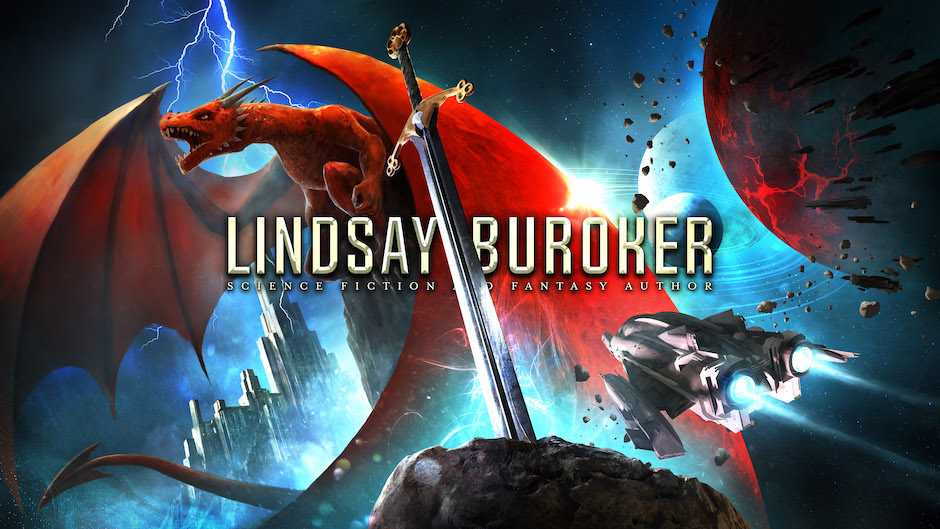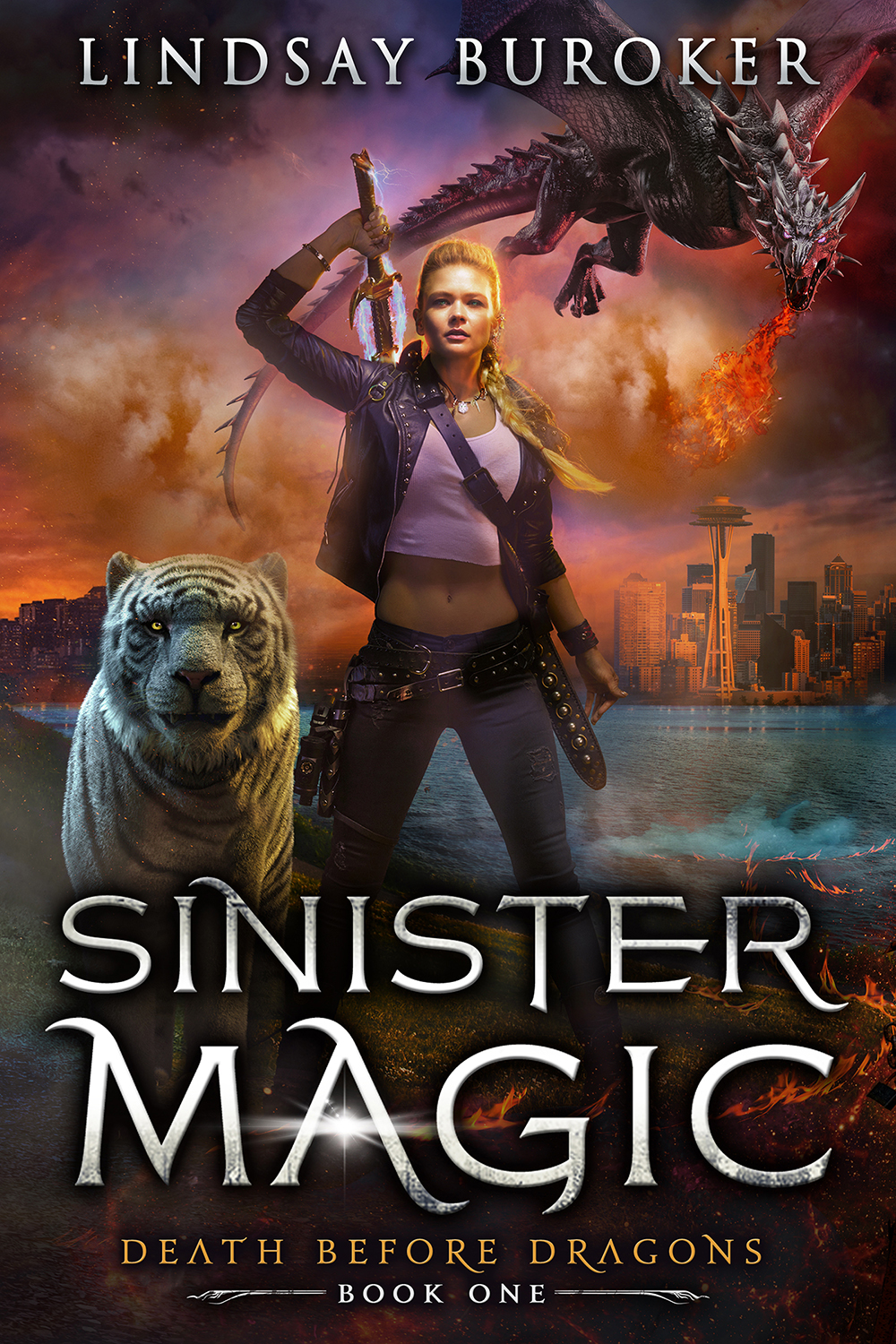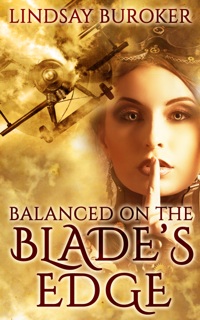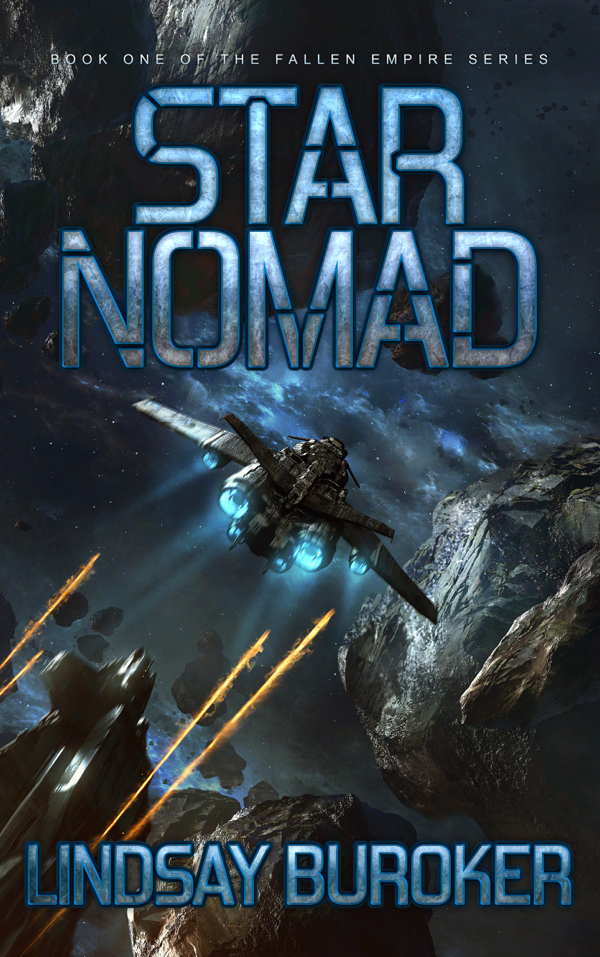 A few years ago, I watched a YouTube video from an internet marketing guru (yes, he did try to sell me something at the end) that talked about why Coca-Cola was such a good brand name. Among other things, it had alliteration and rhyme, two elements that help people remember things.
A few years ago, I watched a YouTube video from an internet marketing guru (yes, he did try to sell me something at the end) that talked about why Coca-Cola was such a good brand name. Among other things, it had alliteration and rhyme, two elements that help people remember things.
I guess my parents didn’t know that I’d one day be working to brand myself as an author, because they didn’t use alliteration or rhyme when choosing my name. Heck, my first and last names aren’t even easy to spell (as attested by the tons of variations people type into Google to find my site). If I were smart, I might have chosen a pen name that would be easy for people to remember, but I’m stubborn and I like to do things my way.
If you hadn’t already guessed, the topic for today’s post is branding, specifically author branding, because we’re more interested in selling books than syrupy soda beverages, right?
What is a branding anyway?
Wikipedia tells us the American Marketing Association defines a brand as a “Name, term, design, symbol, or any other feature that identifies one seller’s good or service as distinct from those of other sellers.” (emphasis mine)
So, basically, it’s about setting yourself up to stand out in a crowded field, right?
As an author, you can brand your name (Stephen King) or your books (The Twilight Series). You might even brand your main character (maybe your parents didn’t give you an easy-to-spell and memorable name, but that’s no reason why you can’t think things through a little better when it comes to your heroes!).
I’ll admit it: I wasn’t thinking of branding or any type of marketing stuff when I wrote my first novels, so you won’t find good examples in my book titles or character names. It is something I’ll think about with the next series.
This is honestly the sort of thing the publisher usually thinks about (did you know authors don’t necessarily get to keep their chosen book titles?), but as indies it’s up to us to do it all.
If you can choose a catchy pen name, series title, or hero name, it might help with branding, but mostly becoming a recognized name in the field seems to be a matter of…
- selling a lot of books
- being around and publishing for a while
- popping up every time your audience turns around
The first two things are tough to influence when you’re starting out, but you can work on number 3.
The secret?
Be everywhere.
Okay, okay, I don’t mean everywhere. We’re not going to run ads on the sides of buses or pay for billboards in the city, but you want to be in as many places as you can where your potential readers hang out.
That sounds time-consuming, but it might be less so than you’d think at first blush. A lot of people equate being everywhere with spending hours on Twitter and Facebook and forums. It is worth it to build a Facebook Fan page and hop on Twitter to interact with folks for a few minutes a day (I’m less enamored with forums, because you’re one little tree amongst a forest there, and threads where you participate quickly get pushed off of the front page), but both sites will probably only be a small part of your branding strategy.
I suggest we put a large portion of our marketing effort into things that we only have to do once, but that can continue to provide benefits (i.e. help with our author brand) down the road. Here are some of the things I’ve done:
- Giving away free ebooks (short stories or novels — something in a series seems to work best) and putting them everywhere you can upload free stuff — For starters, Smashwords, Scribd, Feedbooks, etc. And it’s possible to get free ebooks listed at Barnes & Noble and Amazon too. I did this with my Ice Cracker II short story way back in February, and it was one of the first things that made a real impact on my (at the time laughable) sales.
- Being active on Goodreads — This is a huge reader community, and your future fans are there waiting for you. Yes, you can join the discussion boards and be active that way, but that’s a lot of work. I prefer to do book giveaways (you need to have a paperback copy) and let my ads run there. I first set up an ad campaign for EE and Encrypted back in January (if you read the post, please keep in mind it’s almost a year old — everything from my book covers to my sales numbers have changed a lot since then), and it’s never cost me more than a couple of dollars a day since I made the ads highly targeted. The campaign runs day after day, month after month, without me having to do anything. For giveaways, you get a lot of eyeballs on your book for the price of one paperback plus shipping. I had close to a thousand people sign up for my first giveaway, and I intend to do more soon.
- Being on iTunes with a podiobook (a series is even better) — I’ve written about my adventures in turning The Emperor’s Edge into a Podiobook before, and I know it’s already helped with sales (lots of cool folks have told me they first found my books through iTunes or Podiobooks.com). I’m positive it’ll continue to help into the future, long after all the episodes have been published. Why? Audiobook lovers are readers too, and there’s less competition in the podiobook sphere (because it’s a lot of work to record an audio of your book!). It’s easier to stand out on iTunes and Podiobooks.com than with an ebook on Amazon. If you want to give the first chapter of my book a try (for demonstration purposes, of course), you can listen at Podiobooks or on iTunes.
- Being on Facebook — I already linked to my post about building a fan page, and that’s all I think you need to do here (though you can put time into interacting with others if you enjoy the platform). Why bother? 600 million+ people are on Facebook. Lots of them are readers. Once you have fans, some of them will look for you there. And some of them will “like” you and share your links, thus helping others find you. It doesn’t take long to put up a Facebook page either. Basically, follow their wizard, add some excerpts or links to freebies, and post fun stuff to your wall now and then. Here’s mine for example purposes. Someone’s actually in the process of doing a custom logo and design for me over there, so look for that in the new year.
- Being on Twitter — Twitter is one of those places where your “tweets” will quickly fall off of people’s radars, but it is one more place where you can have a little bio with links to your site and your book page at Amazon. If you network with others, you can build traffic to your blog with Twitter too (through people’s retweets), and it’s a good place to mention your freebies (it’s less good for trying to straight out sell things to folks).
- Guest blogging — A post you write for someone else’s blog can continue to bring traffic to your site for months and years to come, and it exposes you (your brand!) to the readers of that blog. Writing for a high-traffic blog can be particularly helpful. Make sure the post informs (maybe even entertains) and, for the purpose of search engine optimization, contains links back to your site and your freebies. If you don’t have freebies, link to your book pages on Amazon, B&N, Smashwords, etc. (I really like to send people to my freebies, because there’s no monetary obstacle to keep them from trying me, and, if they enjoy the stories, they can always go onto the non-free books.)
- Being out in the real world — Yeah, I’m a hardcore introvert, and this isn’t my strength, but you can get a lot of mileage out of going to conventions and get-togethers with readers and writers in your genre. It’s on my to-do list. In the meantime, I’m having business cards made, so I can at least hand them out to people I meet in my travels. Robin Sullivan over at Write2Publish has a good post on how she made up her husband’s (the author) awesome business cards.
There are more places where you can be, but I’ve listed some of the biggies here. One I didn’t mention is YouTube, in part because it’s less of a reader hangout than a people-who-prefer-videos-for-entertainment hangout, but I’ve heard of authors connecting with their fans through regular vblogs (video blogs) posted there. It is possible to reach your target audience and build up a fan base there. Book trailers aren’t the way, but if you can answer questions or otherwise inform people through that medium, you can do well. Maybe I’ll give it a try in the future (because my to-do list isn’t long enough now!).
Remember, it’s best to do things today that can continue to pull in readers down the road, whether you ever touch those projects again or not. If your idea of marketing is spending 15 minutes contributing here, here, here, and over there every day, you’ll get burned out quickly.
If you have any thoughts or suggestions for more places to work on branding, let us know below.




Excellent post, as usual Lindsay.
One question – how did you produce your podio version? Did you read it yourself?
Really helpful stuff, thanks!
Thanks, Stephen! I do know authors who have done their own podiobooks (it’s definitely cheaper to spend a couple hundred on good equipment and to do the reading yourself), but that’s a lot of work, and I knew the end product wouldn’t be as professional if I did it. I ultimately had the guys over at http://www.darkfireproductions do it.
An added bonus of going that way is that they just signed a contract with Audible, so their authors will be able to get listed there. I’m pretty excited (I read somewhere that Audible didn’t accept self-published titles, so I thought I was out of luck).
Just as an FYI, Podiobooks has a relationship with Audible also. At least they did a year or two ago. It sounds like you have it under control, but if you’re curious, email Evo Terra at podiobooks and ask him about it.
Thanks, Edward. That’s good to know! That would mean people who choose to DYI their audiobooks could still get into Audible. I think I will email and ask about it for a future blog post.
Very interesting, Lindsay. I listened to a little of the Emperor’s Edge just now and it does sound really good. 🙂
Hmm, your feedback on Goodreads advertising is intriguing. I had dismissed that avenue because another writer told me they didn’t find the ads affected their sales. *goes off to read the Goodreads Ad-related post for tips*
You do have to be very careful to structure your ads so you don’t get a lot of wayward clicks from people who aren’t really your target audience (for example, I specifically mention that my books are ebooks, so people without e-readers won’t click).
It’s harder for me to tell these days how many sales might come from there, but in the beginning, when I was only selling a book or two a day, I could see that advertising there bumped things up a bit.
Well written article. I’m not big on Goodreads, but I have all my books listed. Since I don’t really participate in the discussions, I make it a point not to do any real promotions there.
My biggest effort is my free short stories. The Demented Children series has gained me a lot of fans. 🙂
Great stuff. I will look into the audio route in the future. My husband is a big fan of audio books. Will also do a paperback in the future …
For now, I have to finish writing … I will try the Goodreads clicks. Seems like a good thing to try. Targeting audience is a big plus with that.
wonderful tips, some neat ideas there that I think I will run with myself -being completely new to this fabulous game, need all the help there is.
Thanks again!